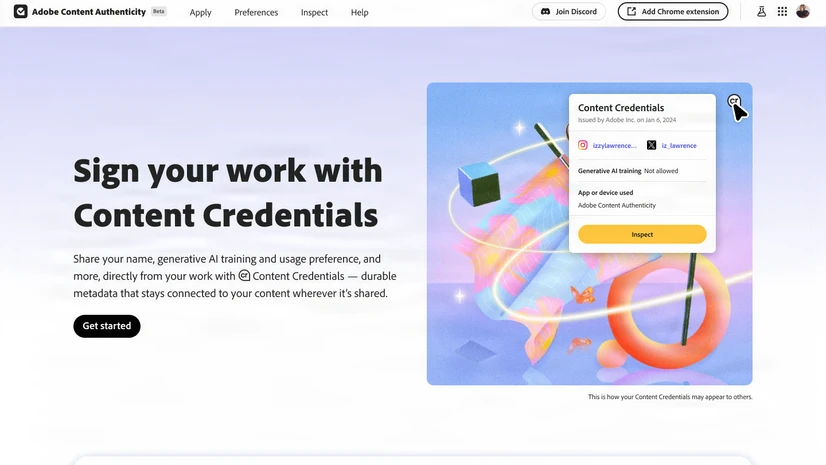)
Adobe Content Authenticity web app
Adobe has announced a new free-to-use web app called Adobe Content Authenticity to help creators protect and receive attribution for their work using Content Credentials. Content Credentials for digital content will be attached metadata carrying details about the creator and sharing context about how the content was created and edited. Additionally, the app will allow users to indicate if they do not want their content to be used for training generative artificial intelligence models.
“Adobe Content Authenticity is a powerful new web application that helps creators protect and get recognition for their work,” said Scott Belsky, Chief Strategy Officer and Executive Vice President, Design and Emerging Products at Adobe. “By offering creators a simple, free, and easy way to attach Content Credentials to what they create, we are helping them preserve the integrity of their work while enabling a new era of transparency and trust online. The Adobe Content Authenticity web app will not only benefit creators but also help consumers navigate the digital ecosystem with greater clarity.”
The company stated that the Adobe Content Authenticity web app will be available as a free public beta in the first quarter of 2025.
Adobe Content Authenticity: Details
Adobe mentioned that the Content Authenticity web app has been developed in close collaboration with creators. By allowing creators to add Content Credentials to their digital work, such as images, audio, and video files, the web app not only protects their work from misuse or misrepresentation but also increases the content’s transparency and credibility.
Content Credentials are already supported by Adobe Creative Cloud apps such as Photoshop, Lightroom, and Firefly. The new web app will integrate with these applications and others, serving as a centralised hub for managing Content Credentials preferences.
With the Adobe Content Authenticity web app, creators can apply Content Credentials in batches to sign their digital work. They also have the ability to control what information is included in Content Credentials, such as their name, website, and social media accounts. With the Generative AI Training and Usage Preference feature in the web app, creators can also add a signal within the Content Credentials if they do not want their content used by or to train other generative AI models.
Adobe stated that Content Credentials applied with the web app remain connected to the content throughout its lifecycle and can be recovered even if the provenance information is removed. Content Credentials, such as digital fingerprinting, invisible watermarking, and cryptographically signed metadata, remain intact even if someone takes a screenshot of the content.
First Published: Oct 09 2024 | 12:12 PM IST









